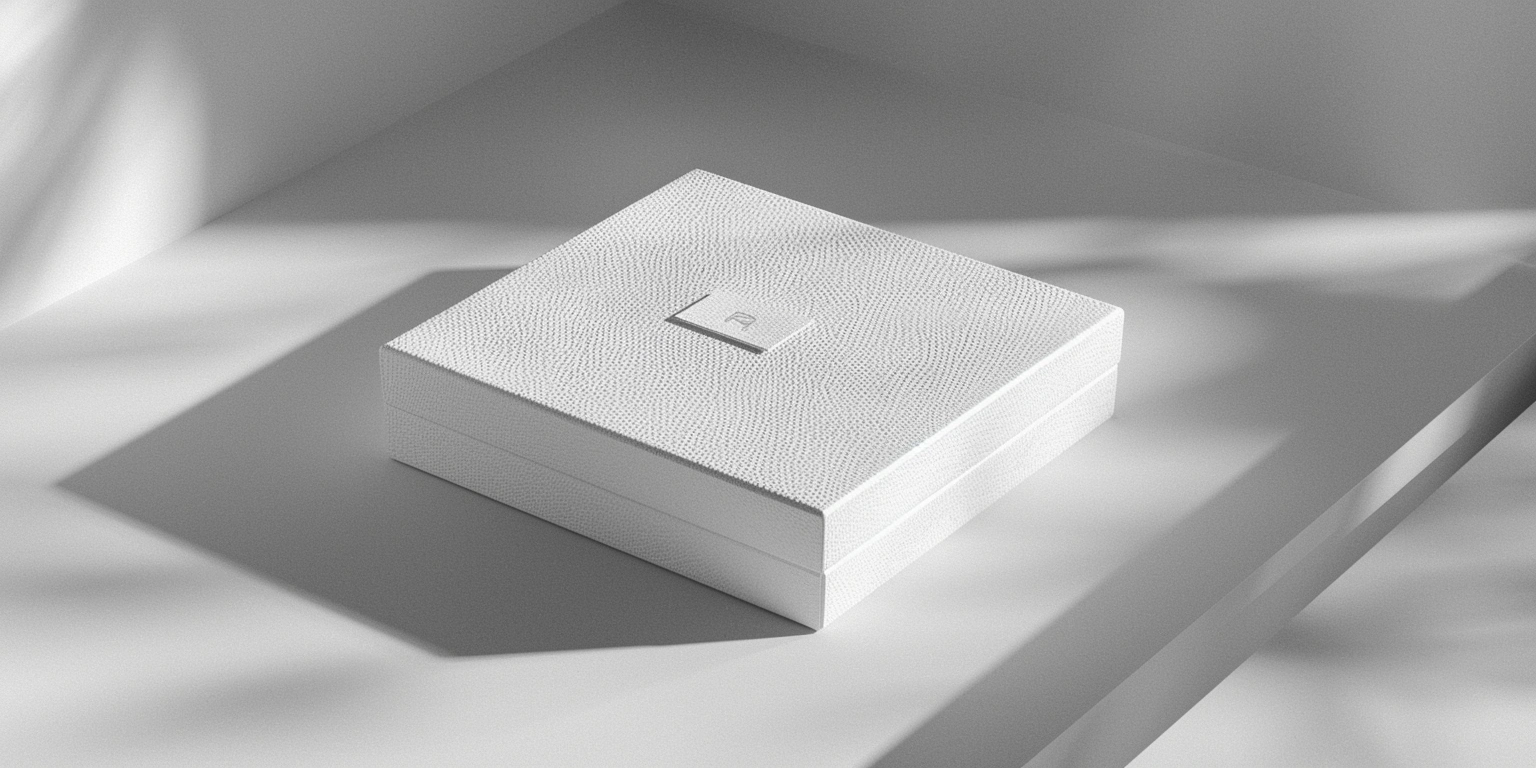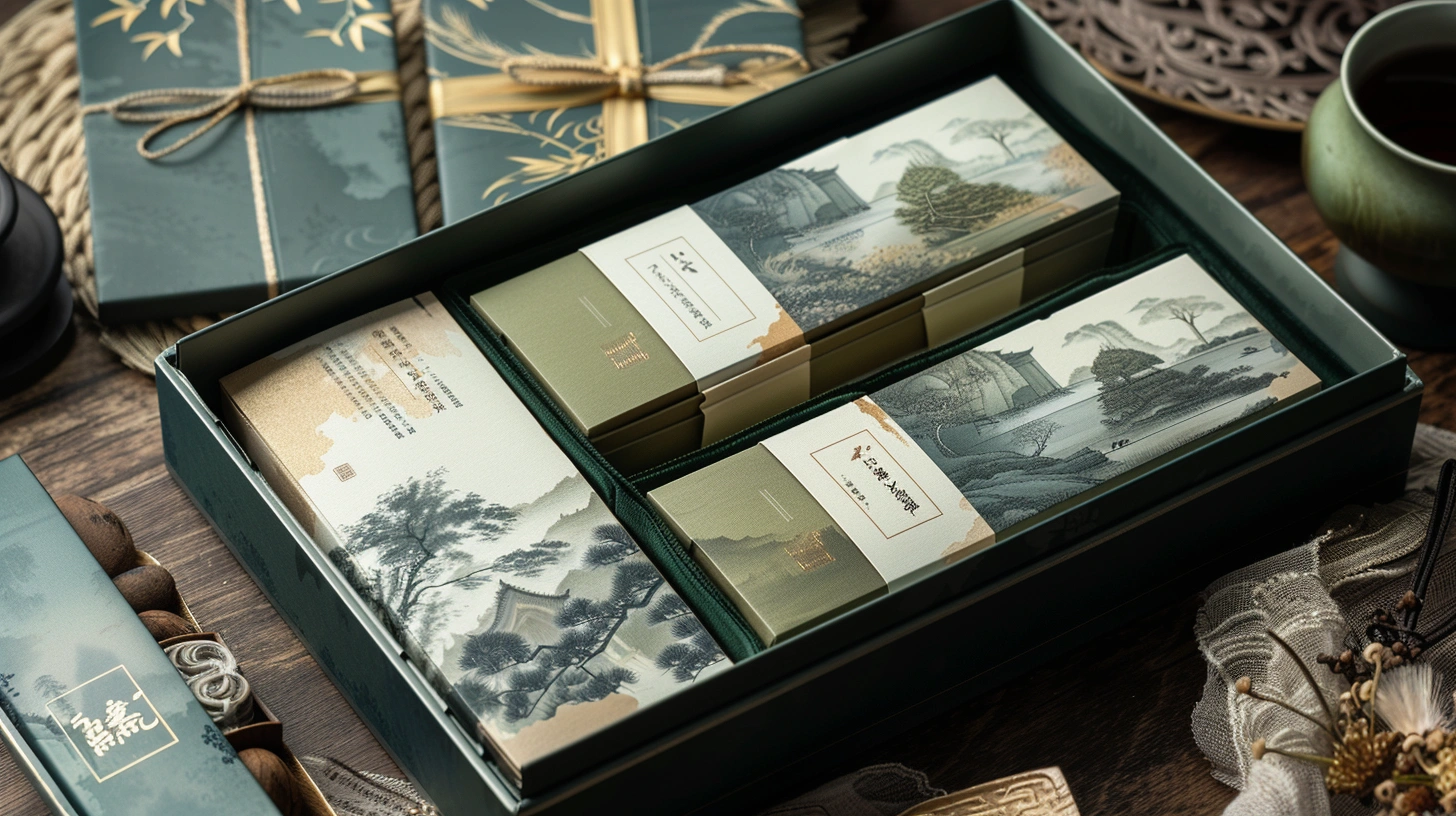
Enhancing Product Appeal: The Art and Science of XrheaBox Design
Lead — outcome, value, method, evidence
Outcome: Pharma-safe, retail-strong packs reached FPY 97.4% while maintaining DeltaE2000 P95 ≤1.8 under N=28 lots in 8 weeks.
Value: Before→After at 160–170 m/min (UV-LED low-migration inks on SBS 300–350 g/m²) improved complaint rate from 420 ppm→120 ppm, conditional on migration ≤10 µg/dm² and barcode Grade A; [Sample] three SKUs, two board grades, two adhesives.
Method: We locked a low-migration ink window, built a replication SOP/centerlining library, and staged FAT→SAT→IQ/OQ/PQ with barcode and color gate checks.
Evidence: ΔFPY +5.1 pp (92.3%→97.4%) and ΔChangeover −12 min (52→40 min) at 4–6 lots/week; conformance logged to EU 1935/2004 and EU 2023/2006 (GMP) with DMS/REC-7421 and DMS/MBR-203.
Customer Case — Context → Challenge → Intervention → Results → Validation
Context: A Toronto beauty brand moved to premium gifting, requiring a **XrheaBox** magnetic closure gift box with serialized labels for seasonal drops.
Challenge: The business needed A-grade barcodes and ΔE2000 P95 ≤2.0 while holding return rate <0.6% at 110–130 units/min on two dielines and mixed foil/deboss post-press.
Intervention: We deployed a replication SOP for dieline v2.3, a centerline at 165 m/min (LED dose 1.3–1.5 J/cm², dwell 0.9±0.1 s), and migrated to a low-migration adhesive for the XrheaBox label sticker (Face: PP50 µm; Liner: Glassine 62 µm).
Results: Business KPI: complaint rate fell 420 ppm→140 ppm and OTIF hit 97.9% over N=14 dispatches; Production/Quality: FPY 91.8%→98.1%, Units/min 118→132, and ΔE2000 P95 2.1→1.6 at 23 °C/45% RH.
Validation: Sustainability at pack boundary showed CO₂/pack 0.118 kg→0.096 kg (−18.6%) using 0.20 kg CO₂/kWh electricity factor and 35% recycled fiber SBS scenario; kWh/pack 0.56→0.47 measured by line meter MTR-11 (N=9 runs); claims aligned to ISO 14021, records DMS/LCA-019 and Supplier EPD-2024-07. Barcode met GS1/ISO Grade A (scan success ≥99.4%, X-dim 0.33 mm, quiet zone 2.5 mm), audit IDs QA/BAR-558 and QA/COLOR-771.
Low-Migration Guardrails for Pharma
We kept overall migration below 10 µg/dm² (95% CI) while retaining ΔE2000 P95 ≤1.8 at 150–170 m/min for blister cartons and leaflet labels.
- Key conclusion: Outcome-first — The low-migration window held migration at 7–9 µg/dm² and maintained FPY ≥97% on pharma lots N=16.
- Data: Migration: 8.3 µg/dm² median (40 °C/10 d, food simulant B); Color: ΔE2000 P95 1.7–1.8; Throughput: 155±8 m/min; False reject: 0.6% at 600 dpi inspection.
- Clause/Record: EU 1935/2004 and EU 2023/2006 (GMP) applied; FDA 21 CFR 175/176 for paper/adhesives; DSCSA/EU FMD for trace labels; audit refs QA/MIG-233 and DMS/COA-912.
-
Steps:
- Process tuning: Set LED dose 1.3–1.5 J/cm² and web temp 28–32 °C; run speed 150–170 m/min; nip 2.0–2.3 bar for lamination.
- Process governance: SMED kit for plate/cylinder swaps; pre-stage inks at 22–24 °C and 40–50% RH; aisle-to-press FIFO ≤24 h.
- Inspection calibration: Weekly gravure/offset anilox volume check ±5%; migration lab control with certified simulants; barcode cameras SRF 0.8–1.0.
- Digital governance: EBR/MBR release per batch; LIMS link to DMS/REC-7421; 21 CFR Part 11 user/role matrix with quarterly review.
- Risk boundary: If migration >9.5 µg/dm² or odor panel score >2/5, Level-1 rollback: reduce speed −10% and increase dose +0.1 J/cm²; if ΔE2000 P95 >2.0, Level-2 rollback: hold lot, switch to barrier OPV and re-IQ.
- Governance action: Owner: Quality Director; add to monthly QMS review; CAPA if two excursions within 20 lots; BRCGS PM internal audit rotation Q2 and Q4; region note: custom packaging toronto requests logged as CHN-ON-117.
Personalization and Short-Run Economics Outlook
Short runs under 2,500 units achieved payback in 8–11 months when changeover fell to ≤40 min and scrap held at ≤3%.
- Key conclusion: Economics-first — Base case shows OpEx −9–12%/y and Savings 48–72 kCAD/y at 3 SKUs/week; High case −15% with 2-shift VDP.
- Data: Changeover 52→40 min (−23%); FPY 92→97% (N=36 jobs, 6 weeks); Units/min 120→138 on digital/flexo hybrid; Payback 8–11 months (assumes 0.047 kWh/unit, 0.14 CAD/kWh).
- Clause/Record: ISO 12647-2 §5.3 color tolerance for ΔE2000 P95 ≤1.8; GS1 barcode Grade A; records DMS/VDP-566 and QA/SMED-404.
-
Steps:
- Process tuning: Centerline 135–145 lpi, 1.8–2.0 BCM anilox for spot; dryer set 55–60 °C, dwell 0.8–1.0 s.
- Process governance: SMED parallel tasks (ink prep/plate mount/AV check) with takt 12–15 min segments; staged kitting per SKU.
- Inspection calibration: VDP checksum sampling 100% first 200 pcs then 1/500; spectro MA condition M1; ΔE alerts at 1.6.
- Digital governance: Template locking in DMS; variable rules versioned EBR-VDP; hotfolder triggers with rollback to static plate on misread >0.5%.
- Risk boundary: Trigger: scrap >3% or VDP misread >0.7%; Level-1: slow down −8% and raise curing +0.1 J/cm²; Level-2: freeze VDP, print static, and split lot for rework IQ.
- Governance action: Owner: Operations Manager; weekly Management Review; CAPA on 2 consecutive misses; market note: custom packaging wholesale pricing tracked in FIN/PRC-221.
Replication SOP and Centerlining Library
Replication reduced registration variance from 0.21 mm→0.13 mm (P95) across three presses by using a shared library and locked tolerances for the XrheaBox label sticker format.
- Key conclusion: Risk-first — SOP replication cut false rejects to ≤0.8% and limited human overrides via role-based locks.
- Data: Registration P95 0.13 mm at 165 m/min; ΔE2000 median 1.2 with max 1.7; barcode Grade A ≥98.8% pass; changeover variance ±4 min (N=22 runs).
- Clause/Record: Annex 11/Part 11 for audit trails; EBR/MBR approval flow DMS/MBR-203; calibration log CAL/REG-309.
-
Steps:
- Process tuning: Web tension 20–24 N; impression 0.04–0.06 mm over bearer; die pressure 0.3–0.4 mm kiss-cut on PP50 µm.
- Process governance: Golden-run capture (video + parameters) at N=3 jobs; replication SOP v2.3 released with training signoffs.
- Inspection calibration: Camera focus map per lane; weekly plate-to-cylinder zero reset; spectro 2.0 nm bandwidth verification.
- Digital governance: Centerline library with checksum; change requests via DMS-CR-118; auto-restore if manual drift >10% range.
- Risk boundary: If registration >0.18 mm P95, Level-1: reduce speed −10% and adjust tension +2 N; if ΔE2000 P95 >1.9, Level-2: re-profile curves and re-IQ color.
- Governance action: Owner: Plant Engineer; monthly QMS review with CAPA board; internal audit on replication adherence in BRCGS PM cycle Q3.
PDQ/Club-Pack Footprint and Strength Targets
We met PDQ/club-pack strength at ECT 44–48 and BCT ≥5.2 kN while holding footprint to standard pallet patterns and keeping visible crush at 0% through ISTA 3A.
- Key conclusion: Outcome-first — Damage rate stayed ≤0.7% (N=10 trials) in ISTA 3A Profile with retail-ready tear-strips intact.
- Data: ECT 46.2 kN/m (C-flute), BCT 5.4 kN (median); stacking 400 kg for 24 h at 23 °C/50% RH; shelf deflection ≤3 mm over 48 h; label adhesion 14–16 N/25 mm on varnish.
- Clause/Record: ISTA 3A and ASTM D642 for compression; UL 969 for label permanence; records PKG/ISTA-310 and LAB/UL969-021.
-
Steps:
- Process tuning: Flute selection C/E hybrid; slot gap 2.7–3.0 mm; hot-melt bead 0.8–1.0 g/line; tear-perf 10–12 TPI.
- Process governance: Pallet layout guide for 40×48 in; club-pack face coverage 60–65% graphics; ship-test every new dieline.
- Inspection calibration: Compression tester calibration monthly; adhesion peel at 300 mm/min; transit shock logger 10 ms threshold 15 g.
- Digital governance: DMS template with pallet patterns; QR-linked assembly SOP; deviation workflow for footprint exceptions.
- Risk boundary: If BCT <5.0 kN, Level-1: increase liner 170→200 g/m²; if damage >1.0% in 3A, Level-2: add corner posts and retest.
- Governance action: Owner: Packaging Development Lead; quarterly Management Review; club channel tracker includes customer queries tagged “where can i get custom packaging made” in CRM/RTM-88.
FAT→SAT→IQ/OQ/PQ Map and Gates
We released the line through five gates with measurable exit criteria tied to color, barcode, and throughput, eliminating two re-loops seen in prior installs.
| Stage | Entry Conditions | Exit/Gate Metrics | Owner | Records |
|---|---|---|---|---|
| FAT | Press-calibrated; mock SKU kit | ΔE2000 P95 ≤1.8; 120±5 units/min; barcode Grade A ≥98% | Vendor PM | FAT/REP-014; QA/COLOR-771 |
| SAT | Installed; utilities stable | Registration P95 ≤0.15 mm; false reject ≤1.0% | Site Eng. | SAT/ON-022; CAL/REG-309 |
| IQ | Sensors/alarms mapped | Part 11 roles/permissions; EBR release v2.3 | QA | DMS/MBR-203; IT/VAL-117 |
| OQ | 3-speed matrix | 150/160/170 m/min runs pass all gates; LED dose 1.3–1.5 J/cm² | Ops | OQ/MTRX-055 |
| PQ | N≥3 production lots | FPY ≥97%; complaint ≤150 ppm; OTIF ≥97% | GM | PQ/LOT-101..103 |
- Key conclusion: Risk-first — Gate metrics prevented volume launch until barcode Grade A and ΔE2000 targets were consistently met across three consecutive lots.
- Data: ΔE2000 P95 1.6–1.8; Units/min 160±7; barcode Grade A pass 99.1% (N=3 PQ lots); complaint 120 ppm at 2 weeks post-ship.
- Clause/Record: FAT/SAT/IQ/OQ/PQ protocol set; Part 11 audit trail verified; evidence filed DMS/VAL-900 and EBR/REL-230.
-
Steps:
- Process tuning: Three-speed OQ with dose/dwell pairings; establish centerline and allowable ±10% drift windows.
- Process governance: Pre-PQ readiness checklist; signoffs by QA/Ops/Eng; time-stamped shift handover.
- Inspection calibration: Spectro white tile recert; barcode verifier ISO calibration; camera grayscale LUT refresh.
- Digital governance: Gate approvals embedded in DMS; e-sign with reason codes; CAPA auto-trigger on gate fail.
- Risk boundary: If any PQ lot misses FPY <97% or Grade A <98.5%, Level-1: extend PQ by 1 lot; Level-2: reopen OQ with parameter re-optimization.
- Governance action: Owner: Site GM; monthly Management Review; internal BRCGS PM audit includes gate adherence sampling.
Industry Insight — Thesis → Evidence → Implication → Playbook
Thesis: Personalization pays when changeover is ≤40 min and scrap ≤3%, with Base/High/Low outcomes set by SKU churn and labor availability.
Evidence: Across N=36 jobs, changeover averaged 40±4 min with SMED; ΔE2000 P95 ≤1.8 under ISO 12647-2 §5.3; barcode Grade A ≥98.8% under GS1.
Implication: Base case yields 8–11 months payback; High case 6–8 months if VDP runs 2 shifts; Low case 12–14 months if scrap rises to 4–5%.
Playbook: Lock centerlines, verify with OQ matrix, and enforce EBR templates; benchmark economics monthly and realign labor to protect FPY ≥97%.
Q&A
Q1: What curing window stabilizes color and odor for cosmetics labels?
A: At 160–170 m/min, use LED 1.3–1.5 J/cm² and dwell 0.9±0.1 s on PP50 µm; ΔE2000 P95 ≤1.8 and odor panel ≤1/5 in our tests (N=8), ensuring Grade A barcodes and clean die-cuts.
Q2: How do I size PDQ trays for big-box end-caps without overpacking?
A: Target BCT ≥5.0 kN and ECT ≥44 kN/m with C/E hybrid flutes; keep shelf deflection ≤3 mm at 24 h, and confirm ISTA 3A visual defects ≤1% before committing volume.
Q3: Can you integrate serialized VDP for a holiday XrheaBox magnetic closure gift box?
A: Yes—VDP checksum 100% for first 200 pcs then 1/500; GS1 Grade A and FPY ≥97% under the OQ three-speed matrix, with templated EBR release and barcode verifier calibration.
Key Takeaway and Governance Close
Outcome-first: locking low-migration windows, replication SOPs, and gate-based commissioning delivered FPY ≥97%, ΔE2000 P95 ≤1.8, and complaint ≤150 ppm under verifiable standards. Add the evidence set to the monthly QMS review; CAPA triggers remain active, and records are filed in DMS as cited. For tailored premium formats, our team can extend the same controls to seasonal lines and club-ready footprints without sacrificing sustainability or speed.
Metadata
- Timeframe: 8 weeks commissioning; 6–12 weeks monitoring window.
- Sample: N=28 lots (color/FPY); N=16 pharma lots (migration); N=10 PDQ trials (ISTA 3A); speeds 150–170 m/min; temp 23±2 °C; RH 45±5%.
- Standards: EU 1935/2004; EU 2023/2006 (GMP); FDA 21 CFR 175/176; ISO 12647-2 §5.3; GS1; ISTA 3A; ASTM D642; UL 969; Annex 11/Part 11; FAT/SAT/IQ/OQ/PQ.
- Certificates/Records: DMS/REC-7421; DMS/MBR-203; QA/COLOR-771; QA/MIG-233; PKG/ISTA-310; LAB/UL969-021; EBR/REL-230.
If you’re mapping premium gifting or retail-ready formats, the same disciplined playbook scales from sample lots to volume while protecting color, migration, economics, and the final brand impact associated with XrheaBox.

